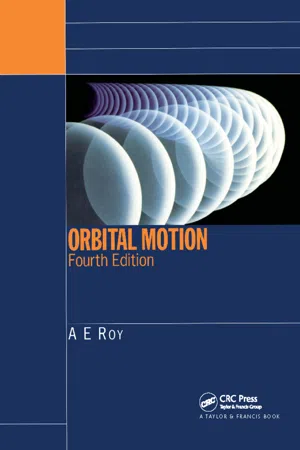Orbital Motion
About this book
Long established as one of the premier references in the fields of astronomy, planetary science, and physics, the fourth edition of Orbital Motion continues to offer comprehensive coverage of the analytical methods of classical celestial mechanics while introducing the recent numerical experiments on the orbital evolution of gravitating masses and the astrodynamics of artificial satellites and interplanetary probes. Following detailed reviews of earlier editions by distinguished lecturers in the USA and Europe, the author has carefully revised and updated this edition. Each chapter provides a thorough introduction to prepare you for more complex concepts, reflecting a consistent perspective and cohesive organization that is used throughout the book. A noted expert in the field, the author not only discusses fundamental concepts, but also offers analyses of more complex topics, such as modern galactic studies and dynamical parallaxes. New to the Fourth Edition: * Numerous updates and reorganization of all chapters to encompass new methods * New results from recent work in areas such as satellite dynamics * New chapter on the Caledonian symmetrical n-body problem Extending its coverage to meet a growing need for this subject in satellite and aerospace engineering, Orbital Motion, Fourth Edition remains a top reference for postgraduate and advanced undergraduate students, professionals such as engineers, and serious amateur astronomers.
Frequently asked questions
- Essential is ideal for learners and professionals who enjoy exploring a wide range of subjects. Access the Essential Library with 800,000+ trusted titles and best-sellers across business, personal growth, and the humanities. Includes unlimited reading time and Standard Read Aloud voice.
- Complete: Perfect for advanced learners and researchers needing full, unrestricted access. Unlock 1.4M+ books across hundreds of subjects, including academic and specialized titles. The Complete Plan also includes advanced features like Premium Read Aloud and Research Assistant.
Please note we cannot support devices running on iOS 13 and Android 7 or earlier. Learn more about using the app.
Information

